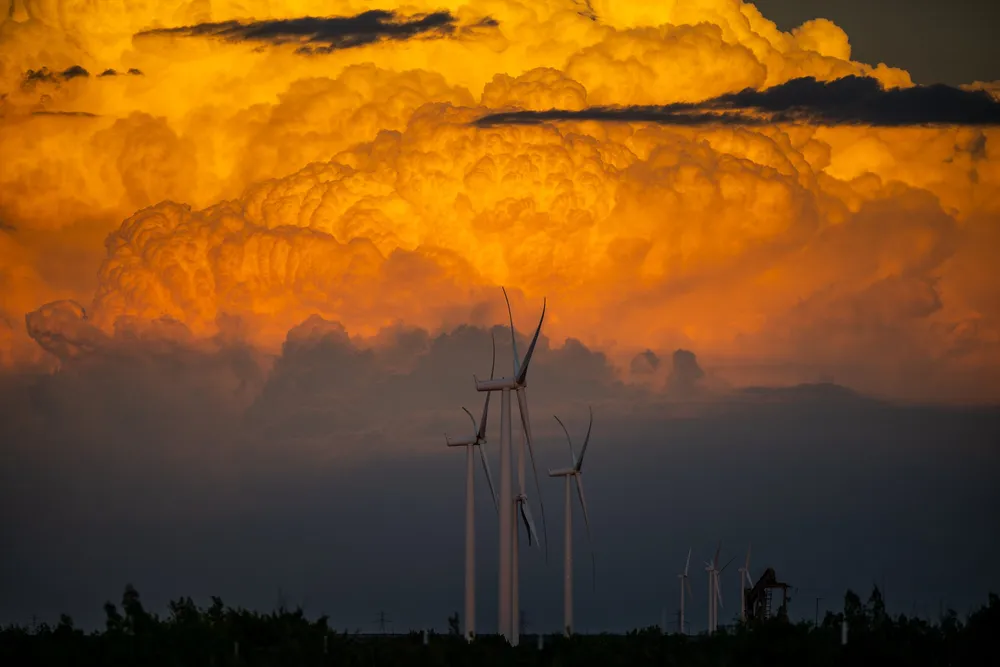Global warming driving 'significant swings' in wind power output
Wind power capacity factor saw swings of over 15% in many regions in 2023, finds research led by the UN, EU and International Renewable Energy Agency

Natural variation in climate cycles and global warming are driving significant swings in regional wind power generation that must be accounted for in energy planning, according to new research.
Climate change and variability “significantly affect” the capacity factor of wind and solar plants, found a new report from the UN’s World Meteorological Organization (WMO), the International Renewable Energy Agency (IRENA) and the EU’s Copernicus Climate Change Service.
“Whether it is solar power generation in drier-than-average conditions, wind power generation in regions experiencing shifts from La Niña to El Niño conditions, or hydropower generation in the face of fluctuating precipitation patterns, climate has a direct bearing on both electricity supply and demand,” found the report.
This brings challenges but also “unprecedented opportunities,” it said.
Integrating climate insights into energy planning can it said yield more reliable power generation, help anticipate seasonal peaks in demand and strengthen the adaptability of future infrastructure development.
The report looked at 2023 – a year that saw a transition from a La Niña to El Niño cycle, complex weather patterns resulting from variations in ocean temperatures. These phenomena affect “key climatic variables for the energy sector such as wind speed, solar radiation, precipitation and temperature,” the report found.
It was also the warmest year on record, until the record was broken again last year.
Averaged over the entire year, 2023 saw annual wind power capacity factor anomalies revealing “relatively large values and distinct patterns” affecting generation potential, found the report.
“Notable positive variations” of between 4-12% were seen in Southern Africa, Eastern Asia (including China), Mexico and Central and Eastern Europe.
Specifically, the 4-8% increase in capacity factor for China, with its installed onshore wind power capacity of over 400GW, would the report said imply a “significant boost” in power output, translating to an additional 65TWh over the year.
On the other hand, many countries saw reductions in wind resources. This is the case for South Asia, the Middle East, the Horn of Africa and several countries in Western Africa, North America and Northern Europe.
“It is also interesting to compare how the anomalies evolved in 2023 compared with 2022,” noted the report. “In many cases, the sign of the anomaly reversed between the two years. This shift is likely due to the predominance of La Niña in 2022 and the transition to El Niño in 2023.”
Annual anomalies for solar PV capacity factor were “relatively contained,” found the report, below 10% compared with the 1991–2020 climate reference period. But wind power capacity factor “exhibits pronounced variability, exceeding 15% annually in many regions.”
The organisations said their findings “underscore the need to integrate climate variability into energy planning.”
“This integration can support the establishment of early warning systems to improve energy load management, resource optimisation and maintenance scheduling.”
“Resilience should be enhanced through diversification and fostering regional collaboration. Diversified energy portfolios, combining solar, wind, hydropower and emerging technologies, are essential for managing the impacts of climate variability and ensuring energy security.”
"These effects, occurring against the backdrop of global climate change and warming, highlight the urgent need for robust, adaptable energy systems capable of mitigating climate-driven risks."
(Copyright)